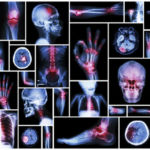
Ten Tips to Optimize Medical Expenses and Decode Tax Deductions
“Decoding Medical Deductions” is an invaluable resource for individuals managing chronic illnesses and navigating the complex landscape of medical expenses and taxes in the United States. This comprehensive guide provides ten top strategies and resources to effectively manage medical expenses, optimize costs, and prepare for tax filing. The ebook covers various topics, including deduction eligibility, expense tracking tools, financial assistance avenues, and tax-related documentation.
The guide delves into the intricacies of medical expense deductions, providing detailed information on what medical expenses are deductible, how to calculate deductions, and the records needed for tax purposes. It also offers insights into the use of forms such as Form 8889 for Health Savings Accounts (HSAs) and Form 8853, other options for tax advantages, and long-term care insurance contracts. View or download a copy of the guide at the bottom of this article.
Readers will benefit from practical advice on tracking medical expenses, including suggestions for free templates, printable paper versions, log-style booklets, and mobile apps for expense tracking. The guide also highlights the importance of personal health record (PHR) systems and insurance policy management tools in organizing and managing medical records and expenses.
Moreover, it provides valuable information on financial counseling services, community resources, support groups, and educational resources for managing healthcare costs. It also emphasizes the role of tax accounting software and lower-fee-based services in guiding tax filing documentation.
The guide dives into the critical aspect of itemizing deductions for unreimbursed medical expenses, explaining the threshold for deduction based on adjusted gross income (AGI) and providing examples for clarity. It also offers insights into decision-making regarding itemizing tax deductions, ensuring readers are better informed about the potential tax benefits and considerations.
In addition to tax-related content, the guide offers guidance on seeking financial assistance related to medical bills, including pharmaceutical assistance programs and non-profit organizations providing grants for specific types of medical expenses.
If you prefer a quick read to the lengthy guide, see the summary below to help you determine if you will itemize your unreimbursed medical expenses as a tax deduction this year by weighing the pros and cons:
Is Itemizing Worthwhile?
When patients with chronic illnesses are deciding whether to itemize deductions or take the standard deduction on their US tax returns, understanding the pros and cons of each option is crucial. Here’s an overview:
Itemizing Deductions
Pros:
- Maximize Deductions: If your total itemizable expenses (including medical expenses exceeding 7.5% of your adjusted gross income, state and local taxes, mortgage interest, charitable donations, etc.) are more than the standard deduction (currently $XX in 2024), itemizing can lower your taxable income more effectively.
- Medical Expense Deduction: Itemizing is the only way to deduct unreimbursed medical expenses.
- Flexibility: You can tailor your deductions to your specific expenses each year, which can be beneficial if you have high or unusual expenses.
Cons:
- Time-Consuming and Complex: Itemizing requires meticulous record-keeping and organization of receipts and documentation throughout the year.
- Audit Risk: Itemizing, especially with high medical expenses, can increase your chances of an IRS audit, although the risk is generally low if you keep good records.
- Possible Lower Benefit: If your itemized deductions are only slightly higher than the standard deduction, the additional effort might not provide a significant financial benefit.
Standard Deduction
Pros:
- Simplicity and Convenience: The standard deduction requires minimal effort and paperwork, making it much easier and faster to file your taxes.
- Immediate Reduction of Taxable Income: The standard deduction provides an immediate, no-questions-asked reduction in your taxable income.
- Less Audit Risk: Since the standard deduction requires less detailed information, it generally carries a lower risk of an IRS audit.
Cons:
- Potential for Lower Deductions: If your allowable itemized deductions exceed the standard deduction, choosing the standard deduction means you miss out on the additional tax savings.
- No Benefit for Medical Expenses: If you take the standard deduction, you cannot deduct any of your medical expenses.
- Less Financial Flexibility: The standard deduction is a fixed amount, so it doesn’t account for fluctuations in expenses from year to year.
Whether or not to itemize depends on your specific financial situation. If your total itemizable deductions exceed the standard deduction, itemizing could be beneficial. Use tools like the IRS’s Interactive Tax Assistant, tax software like TurboTax, or consult with a tax professional to make an informed decision.



